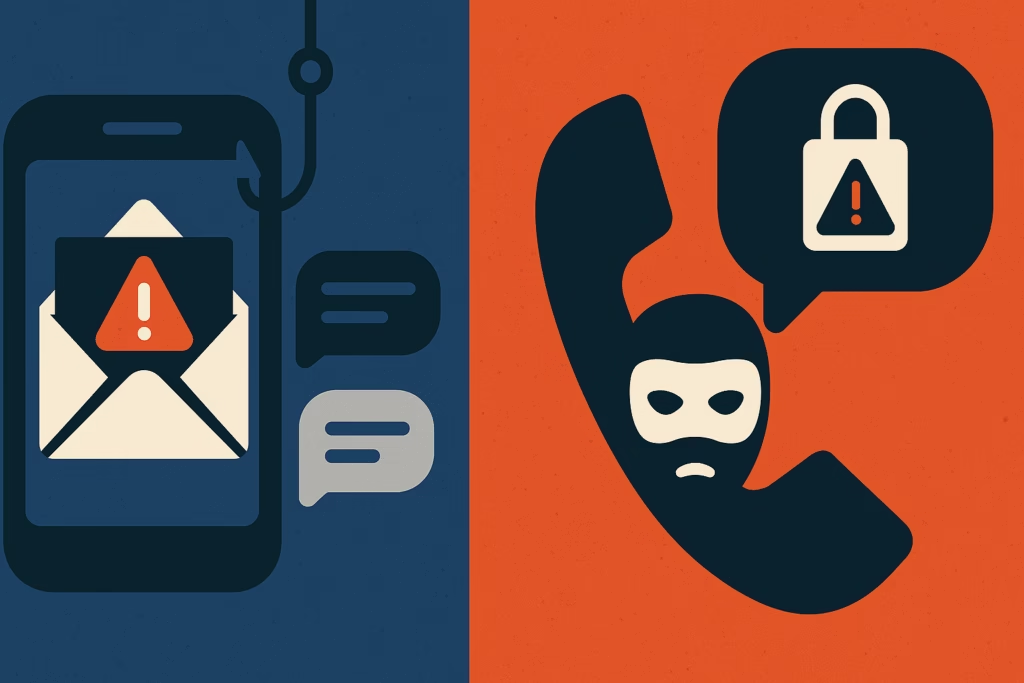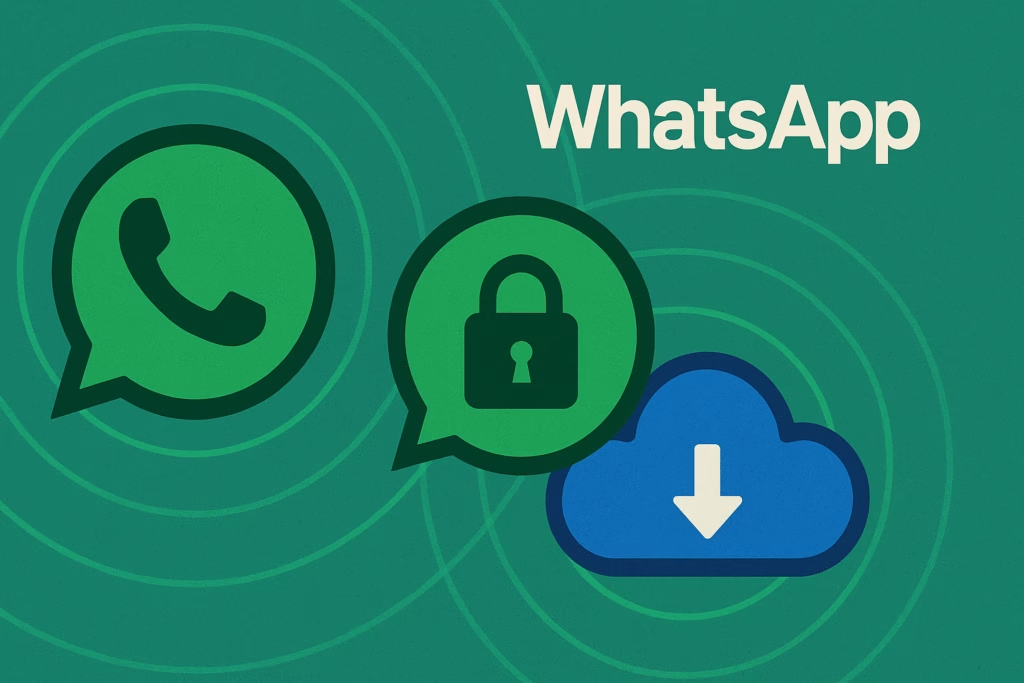
Cybercriminals have evolved beyond traditional email phishing, expanding their tactics to target victims through voice calls and text messages. Voice phishing (vishing) and SMS phishing (smishing) attacks have surged by over 300% in recent years, making your phone a primary attack vector. These sophisticated scams exploit the immediacy and trust associated with phone communications, often catching victims off guard when they least expect it.
Understanding these phone-based threats is crucial for protecting your personal information and financial assets. Unlike email phishing, which many people have learned to recognize, voice phishing and smishing phishing attacks feel more personal and urgent, making them particularly dangerous for unsuspecting victims.
Understanding Voice Phishing (Vishing) Attacks
Voice phishing, commonly known as vishing, involves cybercriminals using phone calls to deceive victims into revealing sensitive information or performing actions that compromise their security. These attackers often impersonate legitimate organizations, government agencies, or financial institutions to establish credibility and urgency.
According to the Federal Bureau of Investigation, Americans lost over $13.3 billion to phone scams in 2022, with vishing attacks accounting for a significant portion of these losses. The sophistication of these attacks has increased dramatically, with scammers using caller ID spoofing, voice manipulation technology, and detailed personal information obtained from data breaches.
Common Vishing Attack Scenarios
Phone phishing scams typically follow several predictable patterns that victims should recognize:
- Bank Security Alerts: Callers claim suspicious activity on your account and request verification of personal information or account credentials
- Tech Support Scams: Fraudsters pose as representatives from Microsoft, Apple, or other tech companies, claiming your device is infected or compromised
- Government Impersonation: Scammers pretend to be from the IRS, Social Security Administration, or other agencies, threatening legal action unless immediate payment is made
- Utility Company Threats: Attackers claim your electricity, gas, or water service will be disconnected unless you pay immediately over the phone
- Healthcare Insurance Fraud: Callers request personal information under the guise of updating insurance records or processing claims
Advanced Vishing Techniques
Modern voice phishing attacks employ sophisticated technologies that make them increasingly difficult to detect:
Caller ID Spoofing: Attackers manipulate caller ID displays to show legitimate phone numbers from trusted organizations. This technology allows scammers to appear as if they’re calling from your bank, government agency, or local business.
Voice Deepfakes: Emerging artificial intelligence technology enables criminals to clone voices of trusted individuals, including family members, colleagues, or public figures. These synthetic voices can be nearly indistinguishable from the real person.
Social Engineering Integration: Vishing attacks often incorporate information gathered from social media profiles, data breaches, or previous interactions to create highly personalized and convincing scenarios.
SMS Phishing (Smishing) Attacks Explained
Smishing phishing attacks use text messages to trick victims into clicking malicious links, downloading harmful apps, or revealing sensitive information. These attacks have become increasingly prevalent due to the widespread use of smartphones and the immediate nature of text message communication.
The Federal Trade Commission reports that consumers reported losing more than $330 million to text message scams in 2022, representing a significant increase from previous years. The success rate of smishing attacks is particularly high because people tend to trust text messages more than emails.
Popular Smishing Attack Methods
Text message phishing scams employ various tactics to deceive victims:
- Package Delivery Scams: Fake notifications about failed package deliveries from UPS, FedEx, or Amazon, requesting personal information or payment for redelivery
- Banking Alerts: Fraudulent messages claiming account suspension or security breaches, directing victims to fake banking websites
- COVID-19 Related Scams: Messages offering fake vaccines, test results, or government assistance programs
- Prize and Lottery Scams: Notifications about winning contests or lotteries that require personal information or fees to claim prizes
- Two-Factor Authentication Bypass: Sophisticated attacks that intercept legitimate 2FA codes or trick victims into sharing them
Smishing Red Flags to Watch For
Identifying smishing phishing attempts requires attention to specific warning signs:
- Urgent language demanding immediate action
- Requests for personal information via text message
- Suspicious links, especially shortened URLs
- Messages from unknown numbers claiming to be from known organizations
- Poor grammar, spelling errors, or unusual phrasing
- Requests for remote access to your device or accounts
- Threats of account closure or legal action
Protecting Yourself from Voice and SMS Phishing
Implementing comprehensive protection strategies is essential for defending against vishing and smishing attacks. These defensive measures combine technology solutions with behavioral changes to create multiple layers of security.
Voice Phishing Prevention Strategies
Protecting against voice phishing requires both technological tools and awareness of common attack patterns:
Verification Protocols: Always verify caller identity by hanging up and calling the organization directly using official phone numbers from their website or official documentation. Never use phone numbers provided by the caller.
Call Filtering Technology: Enable call filtering features on your smartphone or use third-party apps that identify and block known scam numbers. Many carriers now offer free robocall blocking services.
Information Sharing Policies: Establish strict personal policies about sharing sensitive information over the phone. Legitimate organizations will never ask for passwords, Social Security numbers, or account PINs during unsolicited calls.
SMS Phishing Defense Tactics
Defending against smishing attacks requires careful scrutiny of text messages and their contents:
- Link Verification: Never click links in unexpected text messages. Instead, visit the organization’s official website directly through your browser
- Sender Authentication: Verify the sender’s identity by contacting the organization through official channels
- App Installation Controls: Only download apps from official app stores and verify publisher authenticity before installation
- Message Filtering: Enable spam text filtering on your device and report suspicious messages to your carrier
- Regular Software Updates: Keep your smartphone operating system and apps updated to protect against known vulnerabilities
Corporate and Enterprise Protection
Organizations face unique challenges in protecting against vishing and smishing attacks, as employees often become the target of sophisticated social engineering campaigns designed to gain access to corporate networks and sensitive data.
Employee Training and Awareness
Comprehensive employee education programs should address phone-based phishing threats:
- Regular training sessions on identifying voice phishing and smishing attempts
- Simulated attack exercises to test employee responses
- Clear protocols for verifying caller identity and reporting suspicious communications
- Guidelines for handling requests for sensitive corporate information
- Incident response procedures for suspected attacks
Technical Security Measures
Organizations should implement technological solutions to complement human awareness:
Communication Security Policies: Establish clear policies prohibiting the sharing of sensitive information via phone or text message. Implement multi-channel verification for any requests involving financial transactions or data access.
Network Security Controls: Deploy advanced threat detection systems that can identify and block malicious communications. Consider implementing solutions like PhishDef that provide comprehensive protection against various phishing attack vectors, including voice and SMS-based threats.
Access Control Systems: Implement strict access controls that require multiple forms of authentication for sensitive operations, making it difficult for attackers to gain unauthorized access even if they obtain some credentials through vishing or smishing.
Emerging Threats and Future Considerations
The landscape of voice phishing and smishing attacks continues to evolve, with new technologies and techniques emerging regularly. Understanding these trends is crucial for maintaining effective protection strategies.
Artificial Intelligence and Machine Learning
Cybercriminals are increasingly leveraging AI and machine learning to enhance their attack capabilities:
- Automated voice generation that can mimic specific individuals
- Dynamic content generation for personalized phishing messages
- Real-time conversation adaptation based on victim responses
- Advanced caller ID spoofing with location-based targeting
Integration with Other Attack Vectors
Modern phishing campaigns often combine multiple attack methods for maximum effectiveness. Attackers may use email phishing to gather initial intelligence, followed by targeted vishing calls that reference specific information to establish credibility.
Key Takeaways for Phone and SMS Security
Protecting against voice phishing and smishing phishing attacks requires a multi-layered approach combining technology, awareness, and established security protocols. Remember that legitimate organizations will never request sensitive information through unsolicited phone calls or text messages.
The key to effective protection lies in verification, skepticism, and using official communication channels. When in doubt, always err on the side of caution and verify independently rather than responding to unexpected communications.
Organizations must invest in comprehensive employee training and technological solutions to protect against these evolving threats. The cost of prevention is significantly lower than the potential losses from successful attacks.
As phone phishing scams become more sophisticated and widespread, staying informed about emerging threats and maintaining robust security practices becomes increasingly critical for individuals and organizations alike.


